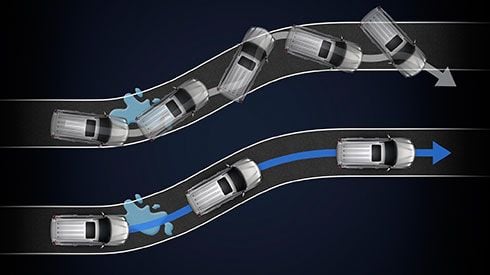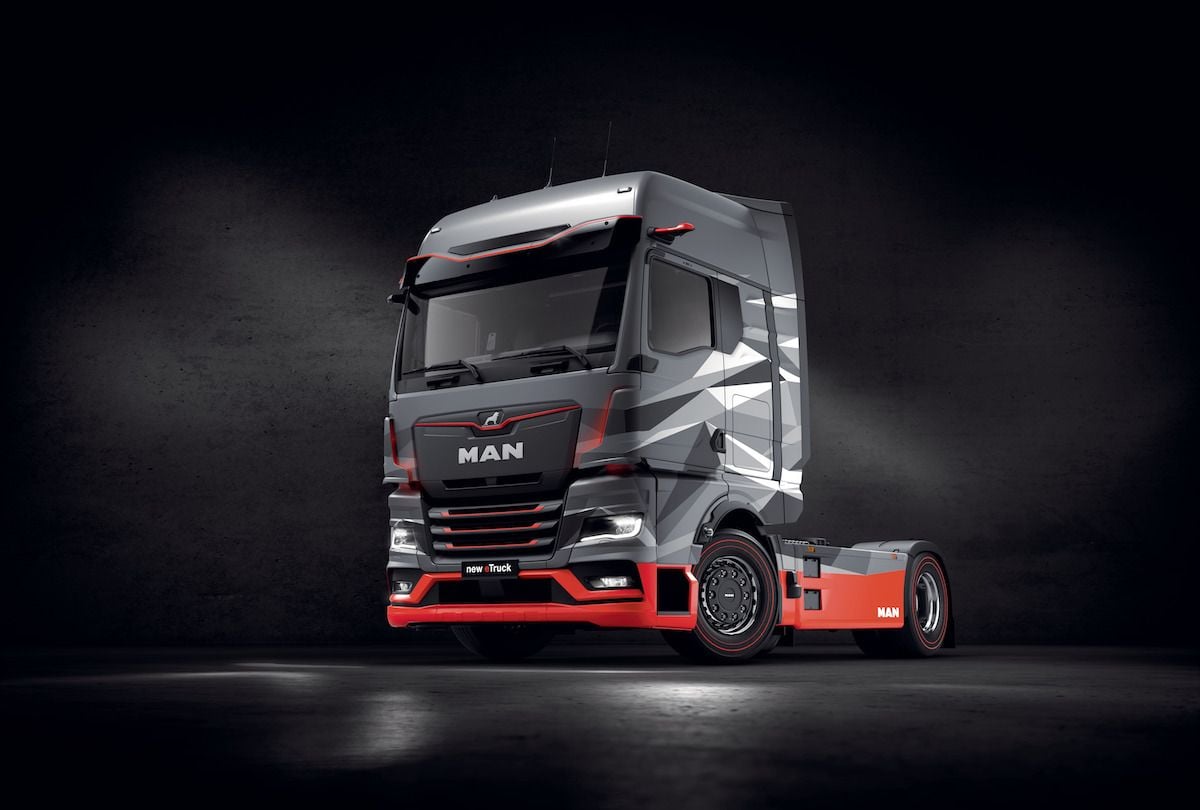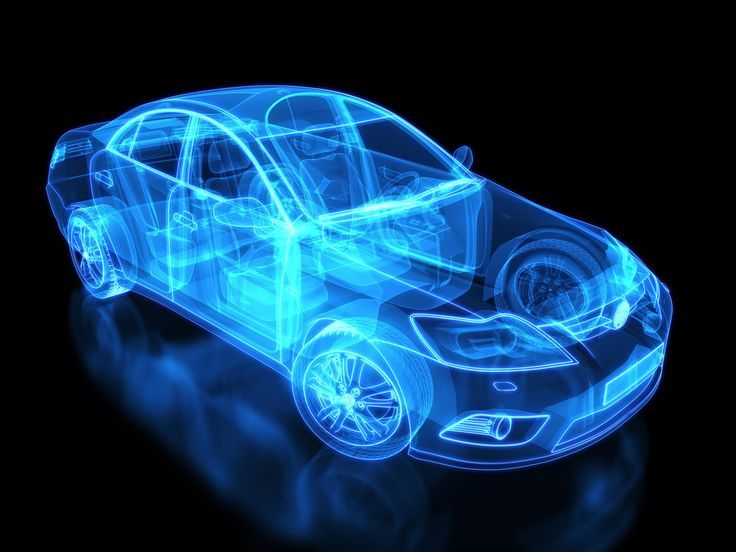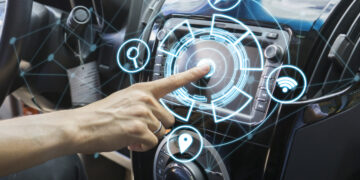In today’s fast-evolving automotive landscape, safety innovations have taken center stage. Vehicle manufacturers are continuously integrating cutting-edge technologies to create smarter, safer cars that protect passengers and pedestrians alike. As these breakthrough car safety features gain widespread traction, they not only enhance driver confidence but also transform the way we experience mobility. This article delves into the evolution of car safety, examines the most advanced technologies reshaping the industry, and discusses the broader impact on road safety, regulatory environments, and consumer behavior. By exploring the latest advancements and their potential challenges, we provide a comprehensive overview of how modern safety systems are redefining automotive standards and paving the way for a safer tomorrow.
Historical Evolution of Car Safety
Automotive safety has come a long way since the early days of motoring. Initially, car safety was largely about basic structural integrity and rudimentary features. However, as the number of vehicles on the road increased and accident statistics soared, the industry was compelled to innovate.
Historically, key milestones include:
A. Seat Belts – Introduced in the mid-20th century, seat belts marked the beginning of personal safety measures in vehicles.
B. Airbags – By the 1980s, airbags became standard, offering an extra layer of protection during collisions.
C. Anti-lock Braking Systems (ABS) – Developed in the 1970s and 1980s, ABS prevented wheel lock-up and helped maintain steering control during emergency braking.
D. Crumple Zones – The concept of crumple zones emerged as manufacturers designed cars to absorb and dissipate impact energy.
As these innovations took root, the automotive industry set the stage for the current era of breakthrough safety features. Today’s vehicles are equipped with technologies that rely on sophisticated sensors, artificial intelligence, and high-speed data processing to preemptively address potential dangers.
Innovative Safety Technologies
Recent advancements in car safety are driven by a blend of hardware innovations and smart software solutions. These technologies are designed not only to reduce the severity of accidents but also to prevent them from occurring in the first place. The following sections detail several breakthrough features that are transforming vehicle safety.
A. Advanced Driver-Assistance Systems (ADAS)
ADAS represents a suite of technologies that assist drivers with critical tasks. By leveraging sensors, cameras, and radar, ADAS continuously monitors the vehicle’s surroundings, providing real-time alerts and automated responses when necessary. Some of the key ADAS features include:
A. Adaptive Cruise Control (ACC): Automatically adjusts the vehicle’s speed based on traffic conditions, maintaining a safe following distance.
B. Lane Departure Warning (LDW): Detects unintentional lane drifting and alerts the driver to correct the course.
C. Automatic Emergency Braking (AEB): Senses imminent collisions and applies brakes to mitigate the impact.
D. Blind Spot Detection (BSD): Monitors adjacent lanes for vehicles that may be hidden from the driver’s view.
E. Traffic Sign Recognition (TSR): Reads road signs and communicates speed limits or other essential instructions to the driver.
These features not only enhance the driving experience but also significantly reduce human error, which is a leading cause of accidents.
B. Collision Avoidance and Mitigation Technologies
Modern vehicles are increasingly equipped with systems designed to predict and prevent collisions. These technologies work in tandem with ADAS and include:
A. Forward Collision Warning (FCW): Uses sensor data to detect potential frontal impacts, alerting the driver well in advance.
B. Rear Cross-Traffic Alert (RCTA): Monitors the area behind the vehicle to detect oncoming traffic when reversing.
C. Pedestrian Detection Systems: Identify pedestrians and cyclists, particularly in urban settings, to avert collisions.
D. Intersection Assistance: Recognizes potential hazards at intersections and can take preemptive measures to slow down the vehicle.
By employing these systems, manufacturers aim to drastically reduce the likelihood and severity of accidents, thereby saving lives.
C. Sensor and Communication Technologies
At the heart of many breakthrough safety features lie sophisticated sensors and communication protocols. These technologies form the backbone of modern safety systems by facilitating data exchange between various components of the vehicle and external infrastructure.
A. Lidar (Light Detection and Ranging): Emits laser beams to create a detailed 3D map of the vehicle’s environment, enabling precise distance measurements.
B. Radar Systems: Use radio waves to detect objects and measure their speed, providing data that is critical for adaptive safety functions.
C. Cameras: High-resolution cameras capture real-time images, which are processed by onboard computers to identify obstacles and road conditions.
D. Vehicle-to-Everything (V2X) Communication: Enables cars to communicate with other vehicles, traffic lights, and even pedestrians, improving situational awareness and traffic management.
The integration of these sensor technologies not only enhances individual vehicle safety but also contributes to a networked ecosystem of connected cars that can share critical safety information in real time.
D. Autonomous and Semi-Autonomous Driving Features
Autonomous driving technologies are among the most talked-about innovations in the automotive industry. While fully autonomous vehicles are still in the testing phase, many cars today incorporate semi-autonomous features that assist with driving tasks.
A. Self-Parking Systems: Utilize sensors and cameras to allow vehicles to park with minimal driver input.
B. Automated Lane Keeping: Uses sensors and algorithms to keep the vehicle centered in its lane, even on winding roads.
C. Driver Monitoring Systems: Employ cameras and biometric sensors to track driver attention and alertness, ensuring that the driver remains engaged in the driving process.
D. Highway Assist: Combines adaptive cruise control and lane-keeping to maintain a steady course on highways, reducing driver fatigue during long journeys.
These systems represent a significant step towards fully autonomous vehicles and are essential in creating a safer driving environment by reducing human error.
How Breakthrough Technologies Work
Understanding the inner workings of these advanced safety systems provides insight into how they can prevent accidents and improve overall road safety. Here, we explore the technology behind these features and the processes involved.
A. Data Collection and Analysis
Modern safety systems rely on the continuous collection of data from various sensors placed around the vehicle. This data includes visual information from cameras, distance measurements from radar and lidar, and speed metrics from vehicle sensors. The data is then processed using powerful onboard computers that apply complex algorithms and machine learning models to interpret the information in real time.
A. Sensor Fusion: Combines data from multiple sources to create a comprehensive view of the vehicle’s surroundings.
B. Real-Time Processing: Advanced processors analyze sensor data almost instantaneously to make split-second decisions.
C. Predictive Analytics: Utilizes historical data and current conditions to forecast potential hazards before they materialize.
B. Automated Response Systems
Once potential dangers are identified, the system triggers automated responses designed to either alert the driver or take control of the vehicle to prevent an accident.
A. Alert Systems: Visual, auditory, and haptic alerts inform the driver of imminent danger.
B. Active Intervention: Systems such as AEB can autonomously apply the brakes or adjust the steering to avoid a collision.
C. Feedback Loops: The system continuously monitors the results of its actions, adjusting its responses as necessary to ensure optimal safety.
C. Connectivity and Communication
For many of these safety features to function optimally, vehicles must be able to communicate with external systems. This connectivity is achieved through V2X technology and cloud-based platforms that aggregate data from multiple vehicles.
A. Vehicle-to-Vehicle (V2V) Communication: Shares real-time information between cars, such as speed, direction, and braking status.
B. Vehicle-to-Infrastructure (V2I) Communication: Allows vehicles to receive updates from road infrastructure, including traffic signals and hazard alerts.
C. Cloud Integration: Facilitates software updates and data sharing across fleets of vehicles, enhancing the accuracy and responsiveness of safety systems.
Impact on Road Safety and Consumer Behavior
The introduction of breakthrough car safety features has had a profound impact on both road safety statistics and consumer behavior. Several studies have shown a correlation between advanced safety technologies and a reduction in accident rates, injury severity, and fatalities.
A. Reduction in Accidents
With features like AEB, lane-keeping assist, and adaptive cruise control, many modern vehicles are capable of preventing accidents before they occur. Data from various safety studies indicate that:
A. Crash Mitigation: Vehicles equipped with collision avoidance systems have a significantly lower likelihood of experiencing severe accidents.
B. Injury Reduction: By mitigating the impact of collisions, these technologies have contributed to a decline in serious injuries among accident victims.
C. Improved Reaction Times: Automated systems can react faster than human drivers, reducing the time available for an accident to develop.
B. Influence on Consumer Purchasing Decisions
As safety becomes an increasingly important factor in automotive purchases, consumers are gravitating towards vehicles equipped with advanced safety features. Manufacturers that invest in these technologies often see a competitive advantage in the market.
A. Enhanced Perceived Value: Buyers are willing to pay a premium for cars that offer state-of-the-art safety systems.
B. Lower Insurance Premiums: Vehicles with advanced safety features are often associated with reduced risk, leading to lower insurance costs.
C. Increased Trust: As safety technologies prove their effectiveness over time, consumer trust in automated systems and advanced driver-assistance features grows.
C. Economic and Social Benefits
Beyond individual safety, breakthrough car safety features contribute to broader societal benefits. Reduced accident rates lead to lower medical and repair costs, fewer traffic congestions, and improved public health outcomes. Additionally, safer roads foster increased economic productivity by minimizing downtime due to accidents and their aftermath.
Challenges and Limitations
Despite the impressive advancements in car safety, several challenges must be addressed to maximize the effectiveness and adoption of these technologies.
A. Technical and Integration Challenges
Modern safety systems are highly complex, integrating data from multiple sensors and communication networks. Ensuring seamless integration between these components can be challenging. Manufacturers must continually refine their systems to handle a wide range of driving conditions and environmental factors.
A. Calibration and Accuracy: Sensors must be precisely calibrated to ensure accurate readings in diverse weather and lighting conditions.
B. Software Reliability: The algorithms that process sensor data must be robust enough to handle unexpected scenarios without false positives or negatives.
C. Hardware Compatibility: Integrating new safety technologies with older vehicle models poses significant challenges, often requiring extensive retrofitting.
B. Cost and Accessibility
While advanced safety features are increasingly common in high-end vehicles, cost remains a barrier for widespread adoption in more affordable models.
A. High Manufacturing Costs: Research and development, along with premium components, drive up the price of vehicles equipped with breakthrough safety features.
B. Market Segmentation: Budget-conscious consumers may opt for less expensive models that lack these advanced systems, potentially widening the safety gap between vehicle classes.
C. Economic Disparities: In emerging markets, cost considerations may delay the adoption of high-tech safety features, affecting overall road safety improvements.
C. Cybersecurity and Data Privacy Concerns
As vehicles become more connected, they are increasingly susceptible to cyberattacks and data breaches. Ensuring that safety systems are secure against hacking is a critical concern for manufacturers and regulators alike.
A. Vulnerability to Attacks: Hackers may exploit weaknesses in vehicle software to gain unauthorized control, posing a significant risk to safety.
B. Data Privacy: The extensive data collected by modern safety systems raises concerns about how personal information is stored, used, and shared.
C. Regulatory Compliance: Manufacturers must navigate a complex landscape of cybersecurity regulations to ensure their systems are both effective and secure.
D. Regulatory and Standardization Issues
As safety technologies evolve rapidly, regulators face the challenge of keeping pace with innovation while ensuring that new systems meet stringent safety standards.
A. Evolving Standards: International and local regulatory bodies must continuously update safety standards to reflect the latest technological advancements.
B. Liability Concerns: Determining liability in accidents involving semi-autonomous or fully autonomous systems remains a contentious issue, with legal frameworks still under development.
C. Global Disparities: Different regions may adopt varying standards for safety technologies, leading to inconsistencies in the effectiveness of these systems across borders.
Regulatory Environment and Market Influences
Governments and regulatory agencies play a pivotal role in the adoption and success of breakthrough car safety features. Policy decisions, safety mandates, and incentives directly influence how rapidly these technologies are integrated into mainstream vehicles.
A. Government Regulations
Many countries have introduced stringent safety regulations that compel manufacturers to include advanced safety features in new vehicles. These regulations not only improve overall road safety but also drive innovation within the industry.
A. Mandatory Safety Standards: Governments enforce minimum safety standards that vehicles must meet before they can be sold, encouraging manufacturers to adopt advanced features.
B. Incentive Programs: Tax credits, rebates, and other incentives encourage both manufacturers and consumers to invest in vehicles equipped with cutting-edge safety technologies.
C. Safety Testing and Certification: Rigorous testing and certification processes ensure that new safety systems perform as intended under various conditions.
B. Market Trends and Consumer Demand
Consumer awareness and demand for safer vehicles have accelerated the development and adoption of breakthrough safety features. As buyers become more informed about the benefits of advanced safety systems, the market has responded with an ever-expanding array of high-tech options.
A. Shift in Priorities: Safety is now a key consideration for many consumers, influencing their purchasing decisions and brand loyalty.
B. Brand Reputation: Automotive brands that consistently innovate in safety tend to enjoy higher consumer trust and a competitive edge.
C. Resale Value: Vehicles equipped with state-of-the-art safety features often command higher resale values, further driving consumer interest.
Case Studies and Real-World Implementations
To better understand the impact of breakthrough car safety features, it is useful to examine real-world examples of how these technologies are being implemented and their tangible benefits.
A. Global Automotive Leader
One leading automotive manufacturer integrated a comprehensive suite of advanced driver-assistance systems across its latest vehicle models. The integration included adaptive cruise control, lane-keeping assistance, and automatic emergency braking, among other features. The results were remarkable:
A. Accident Reduction: Vehicles equipped with the full suite of safety technologies saw a significant decrease in collision rates.
B. Consumer Satisfaction: Feedback from drivers highlighted increased confidence and a heightened sense of security on the road.
C. Industry Benchmark: The success of these features set a new standard for competitors, prompting a wave of similar implementations across the industry.
B. Innovation in Electric Vehicles
Electric vehicles (EVs) have become a fertile ground for incorporating breakthrough safety technologies. One prominent EV manufacturer has integrated sensor fusion systems that combine radar, lidar, and high-resolution cameras. These systems work harmoniously to provide real-time monitoring and hazard detection. The outcome has been a demonstrable improvement in safety metrics, particularly in urban environments where dynamic obstacles are common.
A. Urban Safety: Enhanced detection systems have reduced pedestrian and cyclist collisions.
B. Energy Efficiency: Safety features are optimized to consume minimal energy, preserving the overall efficiency of the EV.
C. Technological Synergy: The integration of safety features with other smart technologies, such as infotainment and connectivity systems, has created a holistic driving experience.
C. Advances in Autonomous Technology
Semi-autonomous features have gradually transitioned from luxury add-ons to mainstream requirements in many markets. Several technology pioneers are testing vehicles with fully autonomous capabilities in controlled environments. These trials are crucial for gathering data and refining algorithms that will one day power fully self-driving cars.
A. Controlled Testing: Autonomous systems are rigorously tested in simulated and real-world environments to ensure safety and reliability.
B. Data-Driven Improvements: Continuous feedback from test drives is used to enhance system accuracy and responsiveness.
C. Future Deployment: Early success in autonomous trials paves the way for broader implementation as regulations and technology mature.
The Future of Car Safety Features
Looking forward, the landscape of car safety is set to undergo even more dramatic changes. The convergence of artificial intelligence, connectivity, and advanced sensor technologies promises a future where vehicles can not only protect occupants but also actively prevent accidents before they occur.
A. Fully Autonomous Vehicles
The ultimate goal of many safety innovations is the development of fully autonomous vehicles. As the technology matures, these vehicles will be capable of handling all aspects of driving, from navigation to emergency response, without human intervention. This advancement is expected to drastically reduce accident rates and transform transportation dynamics globally.
B. Integration with Smart Cities
The future of automotive safety is closely tied to the evolution of smart cities. Vehicles will become integral components of interconnected urban ecosystems, sharing data with traffic management systems, emergency services, and infrastructure networks to optimize safety and efficiency.
C. Enhanced Cybersecurity Measures
As vehicles become more connected, protecting them from cyber threats will be paramount. Future car safety systems will incorporate advanced cybersecurity protocols to safeguard against hacking and data breaches, ensuring that safety features remain robust and reliable.
D. Continuous Improvement through Machine Learning
Machine learning algorithms will play a crucial role in refining safety systems over time. By analyzing vast amounts of data collected from sensors and connected vehicles, these algorithms will improve the predictive capabilities of safety systems, adapting to new driving conditions and emerging risks.
Conclusion
Breakthrough car safety features are revolutionizing the automotive industry, offering unprecedented levels of protection and convenience. From advanced driver-assistance systems and collision avoidance technologies to sophisticated sensor networks and autonomous driving capabilities, these innovations are setting new standards for road safety. The integration of these features not only reduces accidents and saves lives but also influences consumer behavior, market dynamics, and regulatory policies worldwide.
As manufacturers and policymakers continue to invest in research and development, the future of car safety looks promising. With ongoing advancements in technology, vehicles will become increasingly intelligent, connected, and secure, ushering in an era where road travel is safer for everyone. Embracing these innovations is not merely a trend—it represents a fundamental shift in how we approach transportation safety in the modern world.














